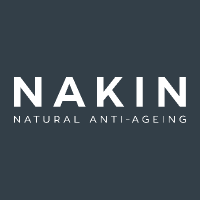Sunshine and Skin Damage

We all know that the sun can cause damage to our skin, contributing to ageing skin and to skin cancer. This is something that we need to take seriously, and why sun protection should be an essential part of our everyday routine.
Most of us love the sun, and when the sun and our skin make contact, they produce that all important vitamin D. But we need to make sure we protect our skin from the sun when required, if we want to avoid unnecessary skin damage.
At Nakin we do not have an SPF in our skincare range, as we believe that it is a separate product that should be applied when needed on our skin, as opposed to during our morning skincare routine. Applying SPF sunscreen as a separate product as required gives us the best protection from the sun, and this is so important if we want to keep our skin looking and staying its best.
Prolonged exposure to the sun can significantly accelerate the ageing process of the skin, a phenomenon often referred to as photoageing. This occurs due to the harmful ultraviolet (UV) rays emitted by the sun, which penetrate the skin and damage its deeper layers. Over time, this can lead to visible signs such as wrinkles, fine lines, age spots, and a loss of elasticity, making the skin appear saggy or leathery. Additionally, photoageing may cause uneven skin tone, rough texture, and an increase in the appearance of broken blood vessels. Protecting the skin through measures such as applying sunscreen, wearing protective clothing, and avoiding excessive sun exposure can help mitigate these effects and maintain a more youthful complexion.
The Sun emits ultraviolet (UV) radiation, which can cause significant damage to the skin. There are three types of UV rays—UVA, UVB, and UVC—though UVC rays are mostly absorbed by the Earth's atmosphere and do not reach the surface. UVA rays penetrate deep into the skin, accelerating ageing and contributing to wrinkles, while UVB rays primarily damage the skin’s outer layers, leading to sunburn. Prolonged exposure to these rays damages skin cells' DNA, increasing the risk of skin cancer over time. This is why using sunscreen, wearing protective clothing, and avoiding excessive sun exposure are vital for maintaining healthy skin.
Besides causing skin damage, UV rays also have other negative effects on our bodies. One of the most well-known effects is the depletion of the ozone layer, which acts as a protective barrier against harmful UV radiation. The thinning of the ozone layer allows more UV rays to reach the Earth's surface, increasing the risk of skin cancer and other health issues.


Leave a comment